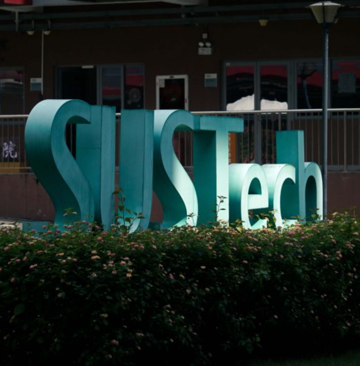Recent progress on water-food-energy nexus studies by SUSTech Junguo Liu's group
Professor Junguo Liu's research group from the School of Environmental Science and Engineering at the Southern University of Science and Technology (SUSTech) completed several studies of water-food-energy nexus. Five studies have been published in the journal of Resources, Conservation & Recycling (IF 8.086) based on the project of China-US International Research Coordination Network (IRCN).
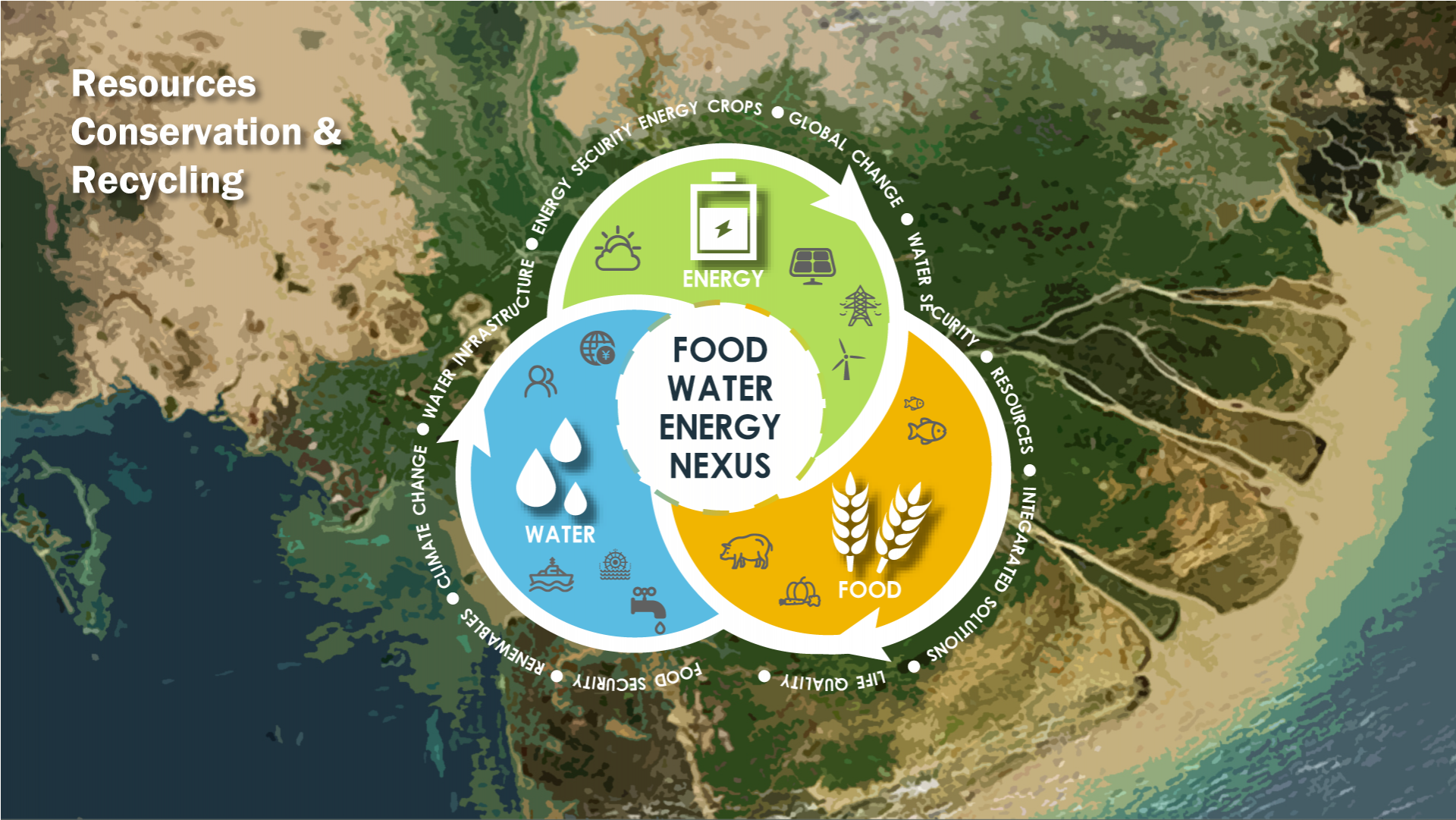
Professor Junguo Liu and Bridget Scanlon (Members of the United States National Academy of Engineering) are project PI from China and the US, respectively. They have been invited to write a research article about nexus with Jie Zhuang and Olli Varis. The article purposed that nexus research needs to move from a linear “tree” model that emphasizes disciplinary research to a “web” model that addresses interdisciplinary complexity. This highlighted the importance of quantifying the complicated interdependencies among food, energy, and water to achieve the SDGs and various grand challenges such as climate change, poverty reduction, and water scarcity. It emphasized the requirement of adopting multidisciplinary and system methodology to understand the trade-offs of water-food-energy nexus.
Professor Junguo Liu is the corresponding author of this article. The research group performed many comprehensive studies related to the water-food-energy nexus in China and the Mekong River Basin.
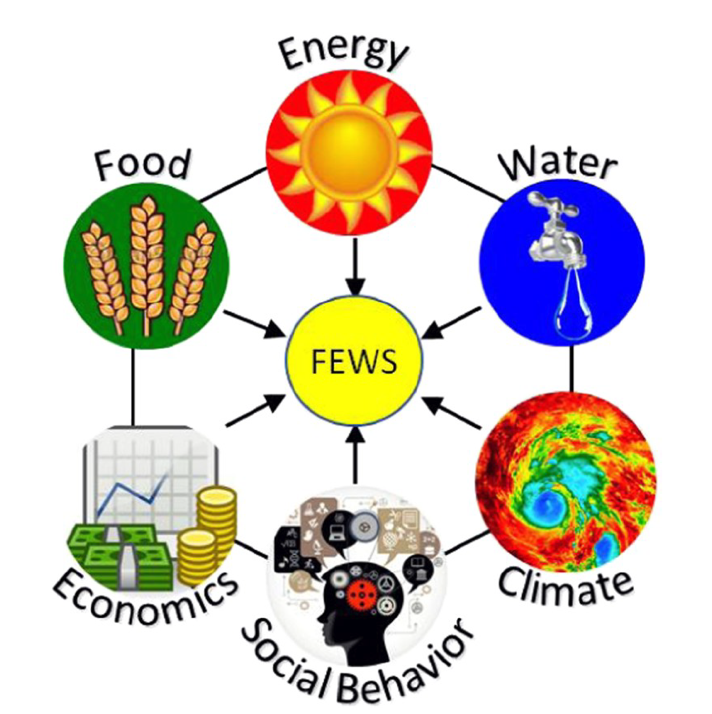
Figure 1. The Food-Energy-Water Nexus
Hydropower, as renewable and climate-friendly energy, makes substantial contributions to meet ascending global power demands. Global warming with projected higher climate variability and more extreme weather conditions would affect the availability of water resources, and thus alter the hydropower generation and the water-energy-food nexus. Nevertheless, there is a lack of research on the effects of different scenarios of global warming on the water-energy-food nexus.
Professor Junguo Liu’s group used an integrative analysis based on a hydrological, techno-economic, and agricultural modeling framework to evaluate the effects of global warming scenarios of 1.5°C and 2°C on the co-benefits between hydropower and irrigation in the Mekong River basin. The results showed a decline in hydropower generation and irrigation water supply in the Mekong River basin under 1.5°C and 2°C warming scenarios. The co-benefits between hydropower and irrigation are more undermined by the global warming of 2°C relative to 1.5°C in the Mekong River basin.
The first author of the paper is Ying Meng, a Ph.D. student in Professor Junguo Liu’s group. Professor Junguo Liu is the corresponding author. This study was also supported by Zifeng Wang, Ganquan Mao, Kai Wang, and Hong Yang.
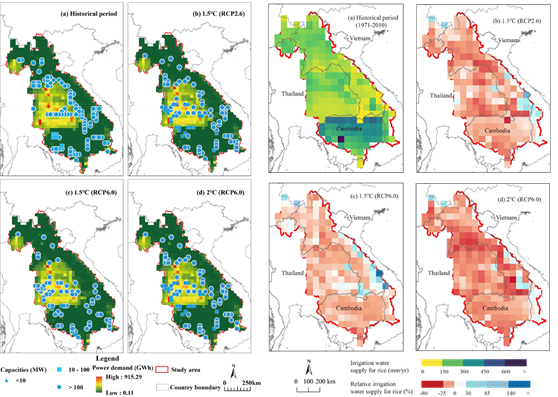
Figure 2. Sites of hydropower plants and irrigation water supply under different scenarios of global warming in the study area
The current nexus research mainly focuses on the quantification among water, food, and energy sectors. Climate change and socio-economic development both affect the water-food-energy nexus, but the combined impacts of these two factors on a nexus system are not well understood. The Mekong River Delta (MRD), a typical region that faces growing challenges due to climate change and socio-economic development, was chosen as a study area. An IWRM-based water management model was adopted to reveal the nexus trade-offs under various climate change and socio-economic scenarios. Results revealed a strong connection among food, energy, and water systems in the MRD. Rice yields would be vulnerable to extreme climate events, and the development of the energy sector would affect regional sustainability through nexus significantly. Specifically, the average total water withdrawal in 2050 was estimated to increase by 40% compared to that in the 2016 drought year and will be more than 3 times higher than the average withdrawal of 1995–2010.
Research assistant professor, Kai Wang, is the first author of this study, and Professor Junguo Liu is the corresponding author. This study was also supported by Jun Xia, Zifeng Wang, Ying Meng, He Chen, Ganquan Mao, and Bin Ye.

Figure 3. Reginal water withdrawal of energy and food sectors
Paddy rice cultivation is an important source of agricultural greenhouse gas emissions in China. The traditional flooded paddy rice fields not only use large amounts of irrigation water, but also produce significant methane (CH4) emissions. To balance the food-water-GHG emissions nexus of rice production, taking Chinese rice as an example, the research team compared the implementation effects of three typical irrigation modes (Continuous Flooding, Midseason Drainage, and Alternate Wetting and Drying). Our results suggest that supporting the expansion of AWD in paddy rice cultivation across China can lead to a “win-win” for the food-water-GHG emissions tradeoffs. Simulation results show that water-saving irrigation methods can significantly reduce the CH4 emissions by 34%-71% and reduce irrigation water by 18%-50% from the paddy rice field, with slight or no loss in rice yields.
The first author of this paper is Research Associate Professor Zhan Tian in the research group. Professor Junguo Liu and Professor Laixiang Sun from the Department of Geography of the University of Maryland are the corresponding authors of the paper. This study was also supported by Yidan Fan, Kai Wang, Honglin Zhong, Dongli Fan, and Francesco Tubiello.
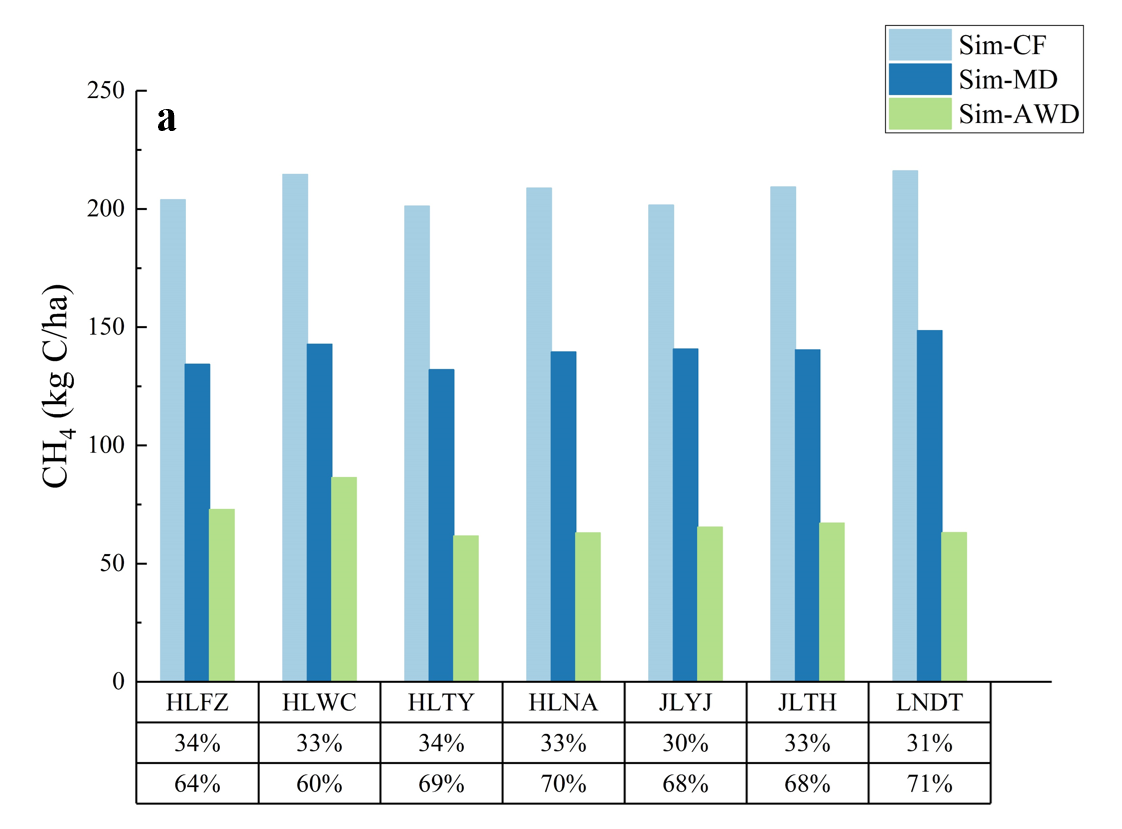
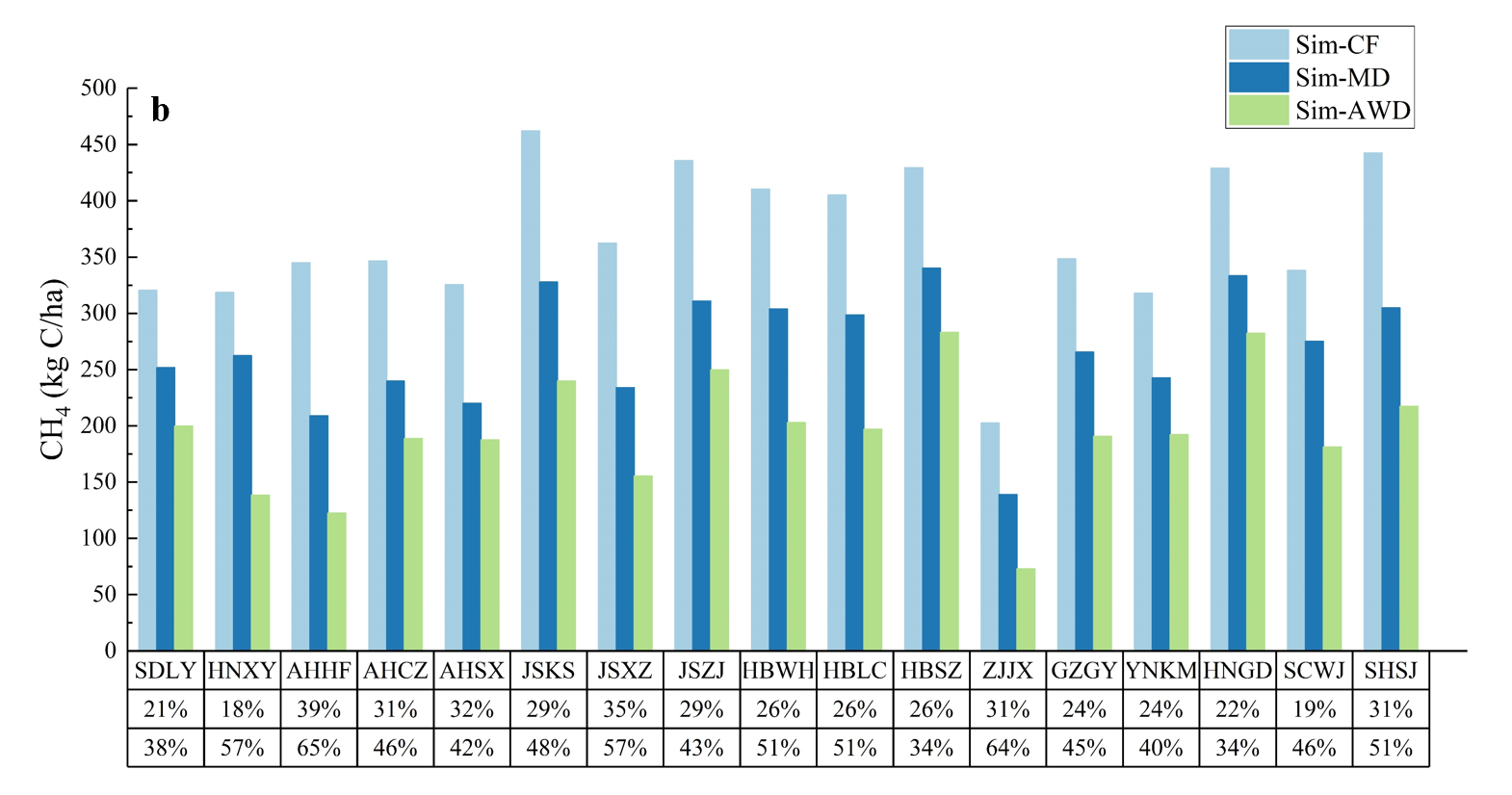
Figure 4. CH4 emissions at the sites in Northeast (a) and South (b) China under three irrigation scenarios
Rapeseed is an important source of edible vegetable oil, vegetable protein, and protein feed, as well as the main raw material for bioenergy. China’s oil shortage trend continues to increase, but in recent years, large-scale winter fallow fields have appeared in the Yangtze River Basin (YRB) – the traditional rapeseed cultivation area. How to make full use of the winter fallow fields to ensure China’s oil safety is a topic of great concern to policymakers.
In this research, we measured the accurate winter fallow periods and spatial extent for 2007-2008 in the YRB region at the 1km × 1km grid-cell level, by combining a remote sensing filtering method and validation based on a unique database of rapeseed growing records consolidated from 84 agro-meteorological observation stations over 1981-2011. By coupling the AEZ (Agro-Ecological Zones, AEZ) and CHINAGRO-II models, we have also estimated economically meaningful production of rapeseed oil from the winter fallow fields and the benefit to China’s total edible oil supply and trade. Our results show that the area of winter fallow land available for rapeseed cultivation in the YRB was 7.78 million hectares in 2007-2008, and the total production potential of rapeseeds is 15.17 million tons.
In a realistic scenario that China is able to utilize 60% of the production potential of planting rapeseeds in the winter fallow fields, the newly added supply in rapeseed would boost the self-sufficient rate of rapeseed oil supply to 100% in 2020 and to 72% in 2030. The increase of 9.1 million tons of rapeseed in 2020 will not only reduce China’s rapeseed imports to zero, but also reduce 8.1 million tons of soybean imports. In 2030, China’s rapeseed imports would decrease from 15 million tons to 7.3 million tons under the baseline, which could effectively alleviate China’s future oil import pressure and ensure China’s food security.
The first author of the study is Research Associate Professor Zhan Tian. Professor Huanguang Qiu from the School of Agricultural Economics and Rural Development of Renmin University of China and Professor Laixiang Sun from the Department of Geographical Sciences of the University of Maryland are the corresponding authors of the paper, and Professor Junguo Liu is co-author of the paper. This study was also supported by Yinghao Ji, Hanqing Xu, and Honglin Zhong.

Figure 5. The extent of winter fallow fields suitable for growing rapeseeds in Yangtze River Basin in 2007-2008
Paper Links:
1. https://www.sciencedirect.com/journal/resources-conservation-and-recycling/special-issue/10FMF7DP7KG
2. https://www.sciencedirect.com/science/article/pii/S092134492030690X
3. https://www.sciencedirect.com/science/article/abs/pii/S0921344920307084
4. https://www.sciencedirect.com/science/article/abs/pii/S0921344920306753
5. https://www.sciencedirect.com/science/article/abs/pii/S0921344920304766
